Proper meat storage is essential to maintain its quality, flavor, and safety. Mishandling or improper storage can lead to spoilage, loss of nutrients, and foodborne illnesses. This guide will walk you through the best practices for storing different types of meat to ensure they remain fresh and safe to eat.
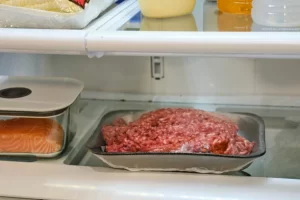
Understanding Meat Spoilage
Before diving into storage techniques, it’s crucial to understand what causes meat to spoil. Meat spoilage is primarily due to the growth of bacteria, molds, and yeast. Temperature, moisture, and air exposure can accelerate spoilage, leading to unpleasant odors, flavors, and potentially harmful pathogens.
General Meat Storage Guidelines
Regardless of the type of meat, some general rules apply to ensure safety and quality:
- Temperature Control: Keep meat refrigerated at 40°F (4°C) or below and frozen at 0°F (-18°C) or below.
- Prevent Cross-Contamination: Store meat in leak-proof containers or plastic bags to avoid juices dripping onto other foods.
- Labeling: Always label meat packages with the date of purchase and the type of meat to keep track of its freshness.
- Use-by Dates: Pay attention to use-by dates on packaging and try to consume meat before this date for optimal quality.

Storing Fresh Meat
1. Refrigeration
Fresh meat should be stored in the coldest part of the refrigerator, usually on the bottom shelf or in a dedicated meat drawer. Here’s a breakdown of storage times for different types of fresh meat:
- Beef, Pork, and Lamb: Steaks, chops, and roasts can be stored for 3-5 days.
- Ground Meat: Ground beef, pork, lamb, and poultry should be used within 1-2 days.
- Poultry: Whole chicken or turkey can be stored for 1-2 days; pieces like breasts or thighs can last 1-2 days as well.
2. Freezing
Freezing is an excellent way to extend the shelf life of meat. Here are some tips for freezing meat:
- Packaging: Wrap meat tightly in plastic wrap, aluminum foil, or freezer paper, and place it in a heavy-duty freezer bag to prevent freezer burn.
- Portioning: Divide meat into meal-sized portions before freezing for easier thawing and use.
- Labeling: Clearly label each package with the type of meat and the freezing date.

Storing Cooked Meat
Cooked meat can also be stored in the refrigerator or freezer, but there are specific guidelines to follow:
1. Refrigeration
Cooked meat should be cooled and refrigerated within two hours of cooking. Store it in airtight containers or wrap it tightly in plastic wrap or aluminum foil. Cooked meat can typically be stored in the refrigerator for:
- Beef, Pork, and Lamb: 3-4 days
- Poultry: 3-4 days
- Ground Meat: 1-2 days
2. Freezing
For longer storage, cooked meat can be frozen. Follow these steps for best results:
- Cooling: Allow the meat to cool completely before freezing.
- Packaging: Use airtight containers or heavy-duty freezer bags to prevent freezer burn.
- Labeling: Label the package with the type of meat and the freezing date.

Thawing Meat Safely
Proper thawing is just as important as proper storage. Here are three safe methods to thaw meat:
1. Refrigerator Thawing
This is the safest method, as it keeps the meat at a consistent, safe temperature:
- Planning Ahead: Thawing in the refrigerator can take several hours to a few days, depending on the size of the meat.
- Containment: Place the meat in a container to catch any juices and prevent cross-contamination.
2. Cold Water Thawing
For faster thawing, use cold water:
- Sealing: Ensure the meat is in a leak-proof plastic bag.
- Submerging: Submerge the bag in cold water, changing the water every 30 minutes.
- Cooking Immediately: Meat thawed using this method should be cooked immediately.
3. Microwave Thawing
Use this method only if you plan to cook the meat immediately after thawing:
- Setting: Use the defrost setting on your microwave, following the manufacturer’s instructions.
- Monitoring: Keep an eye on the meat to prevent it from starting to cook during the thawing process.
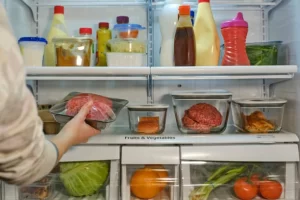
Tips for Reducing Waste
- Planning: Plan meals ahead to buy only what you need.
- Proper Storage: Use appropriate storage methods to extend shelf life.
- Using Leftovers: Incorporate leftover meat into new dishes to minimize waste.
Recognizing Spoiled Meat
It’s crucial to know the signs of spoiled meat to avoid foodborne illnesses:
- Odor: Spoiled meat often has a sour or rancid smell.
- Color: Discoloration, such as grayish or greenish hues, indicates spoilage.
- Texture: Slimy or sticky texture is a sign of bacterial growth.
Proper meat storage is key to ensuring food safety and maximizing the shelf life of your purchases. By following the guidelines in this article, you can enjoy fresh, flavorful, and safe meat in your meals. Always prioritize proper refrigeration, freezing, and thawing techniques, and stay vigilant for signs of spoilage to protect yourself and your family.
♦ Our Recommended Kitchenware
Refrigerator: Capacity Double-door Compact Fridge with Freezer
Leak-Proof Containers: Urban Green Glass Food Container Set with Glass Lid
Plastic Wrap: Cling Classic Plastic Wrap
Freezer Bags: Reli. 2 Gallon Freezer Bags

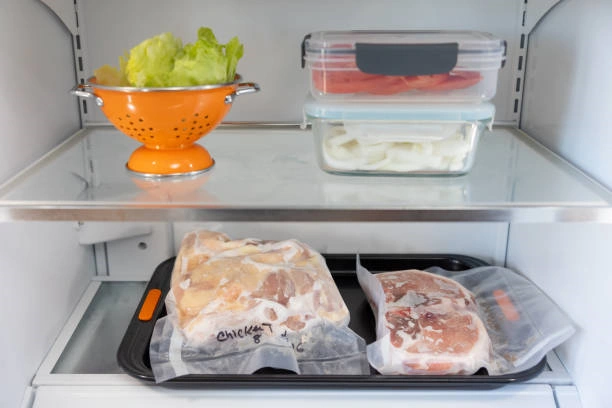

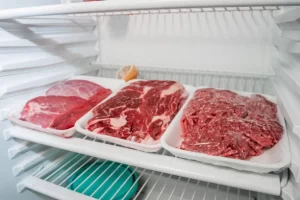





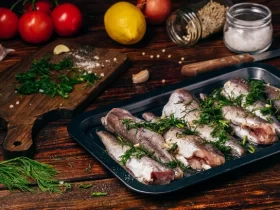


I never knew there were so many rules for storing meat! This guide is really helpful.